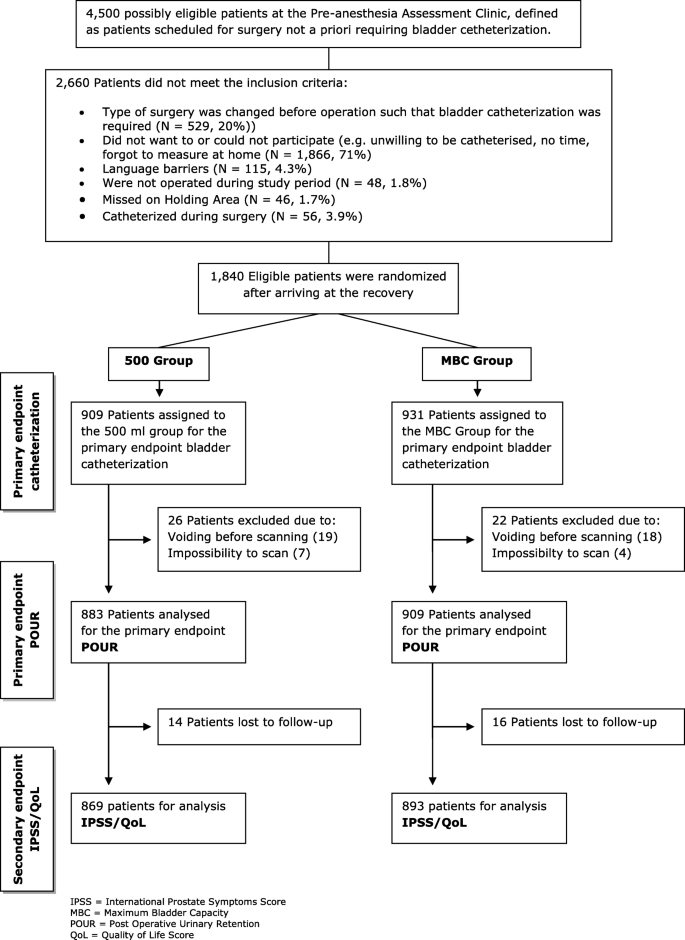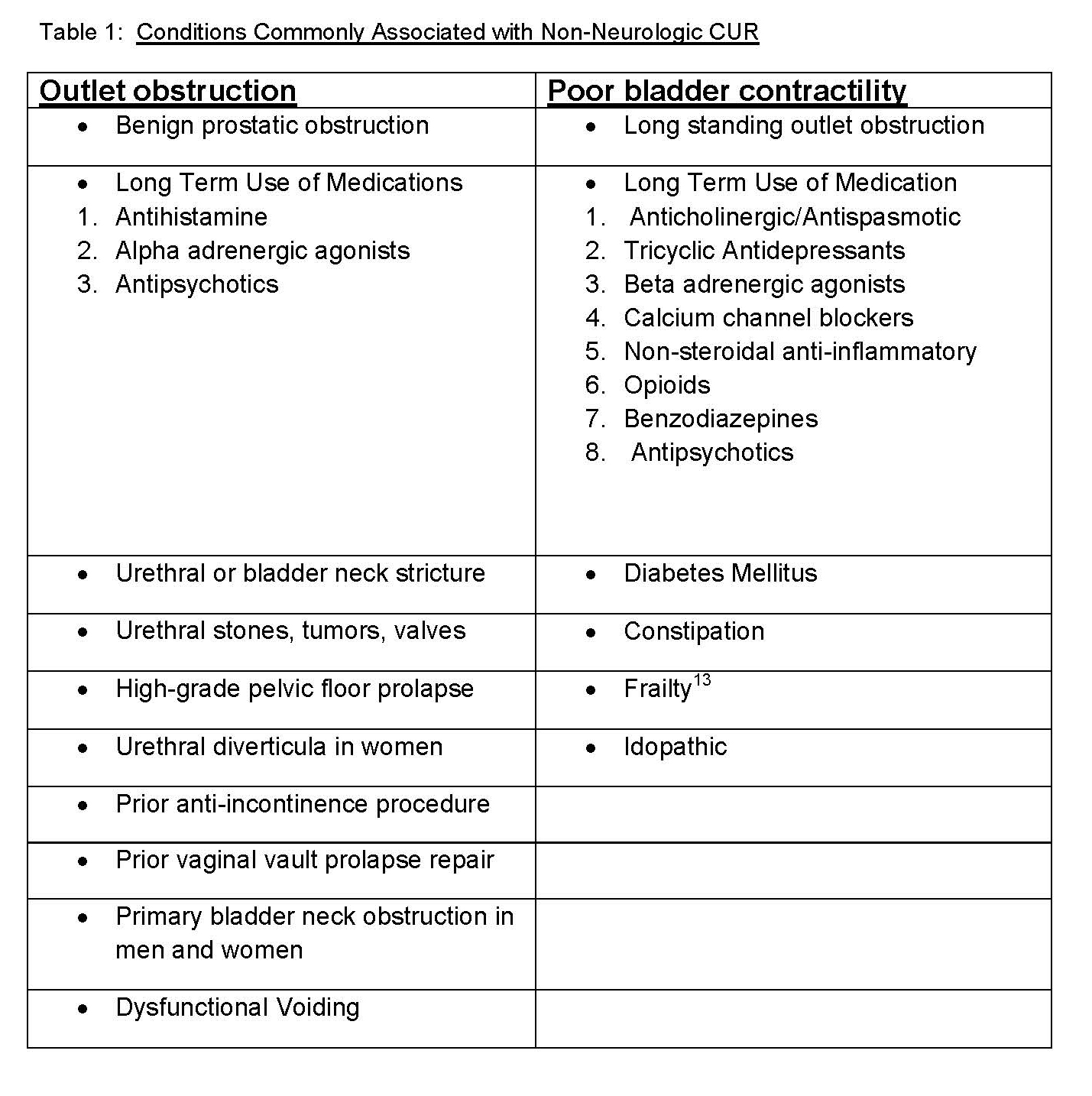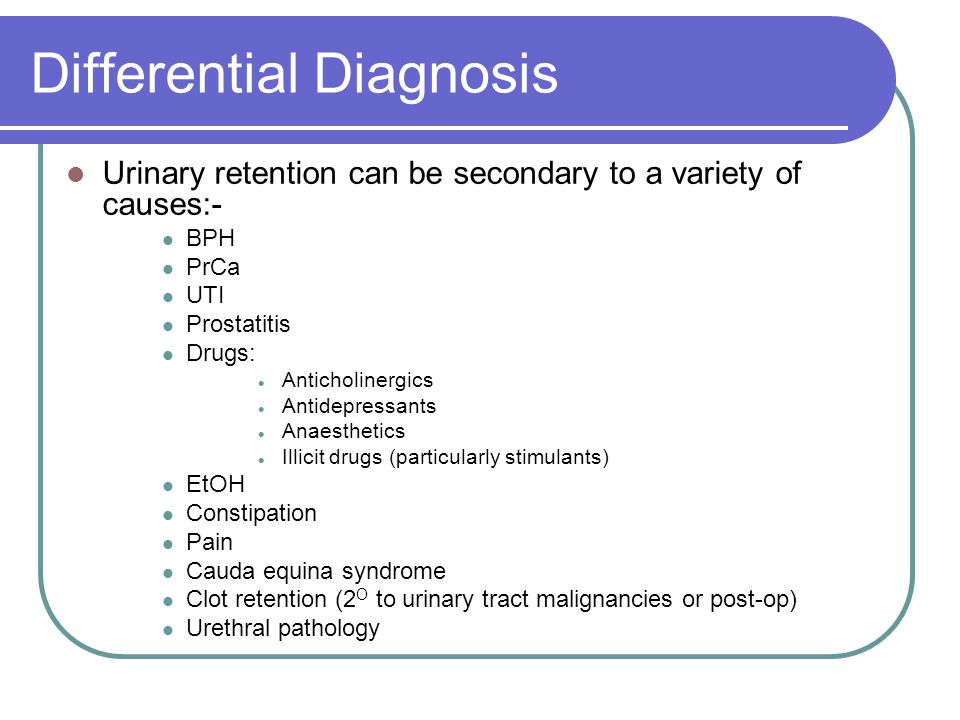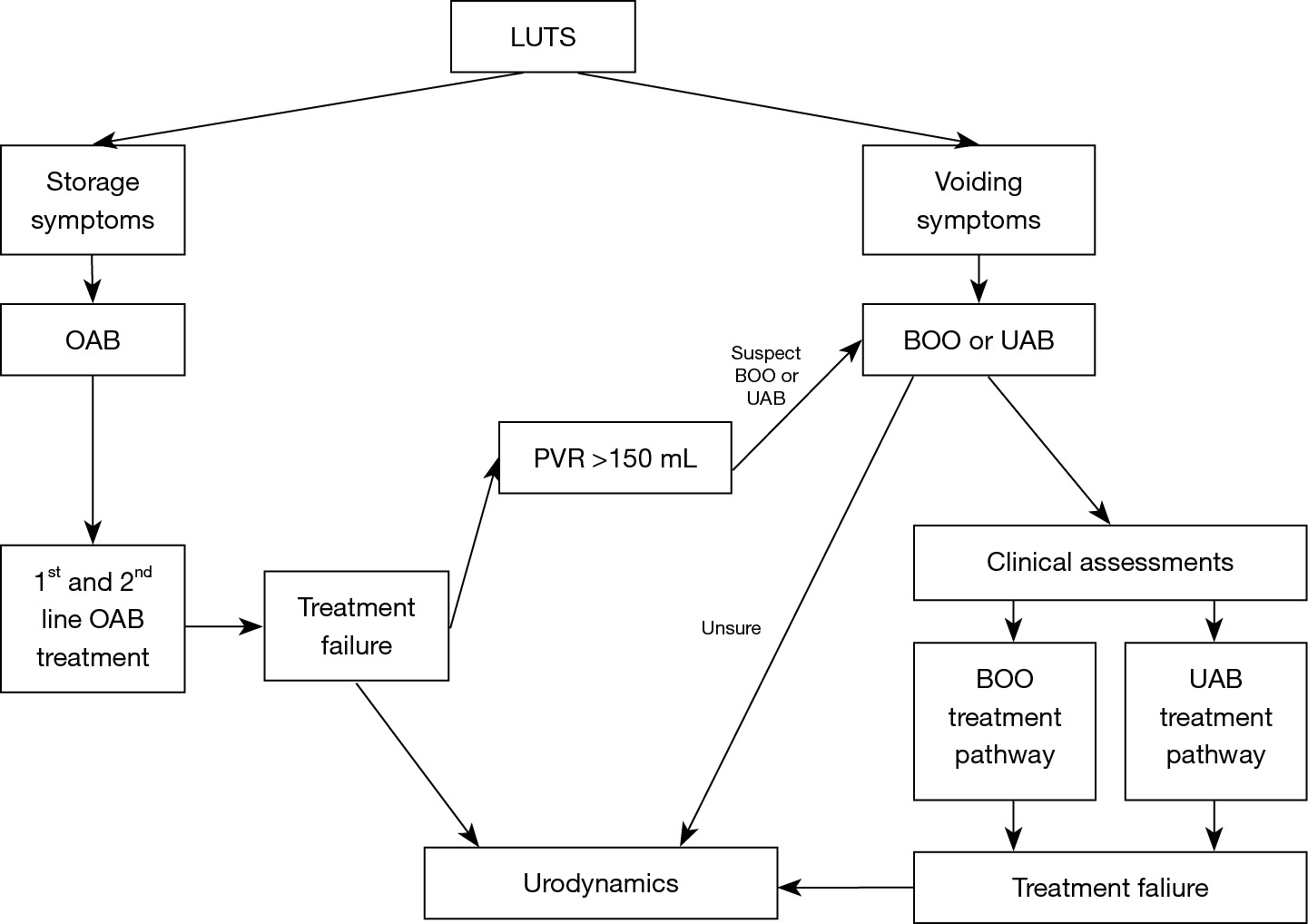Post Op Urinary Retention Treatment
Post op urinary retention treatment. The purpose of this study was. Patients at increased risk of post-operative urinary retention should be identified before surgery or the condition should be identified and treated in a timely manner following surgery. Urinary obstruction post-operative retention of urine is extremely likely.
Epidural anaesthesia led to higher risk for post-partum urinary retention. While there is no standard definition for POUR it is characterized by impaired bladder emptying with. Whilst it may appear that cholinergic agents and intravesically administered prostaglandin offer most promise in the treatment of post-operative urinary retention the evidence is weak.
The risk of post-operative urinary retention is increased following certain surgical procedures and anaesthetic modalities and with patients advancing age. American Medical Association defines urinary retention as. 1 2 Estimates of retention rates after incontinence and prolapse surgery range from 2524 and are as high as 43 after tension-free transvaginal mesh sling placement.
Prevent over-distention of bladder in postoperative patients and intervene to correct POUR before muscle damage occurred. Estimates of POUR after pelvic surgery range from 2. Lingaraj et al 2007.
In two studies the incidence of POUR after cesarean delivery done with epidural anesthesia ranged from 23 to 28 percent. The incidence of POUR in the general surgical population female and male is reported from 4 to 13 percent 3-5. Postoperative urinary retention POUR is a frequent consequence of gynecologic surgery especially with surgical correction of urinary incontinence and pelvic organ prolapse.
We could facilitate appropriate use of catheterization in patients at risk of POUR. 2 3 When managed properly POUR does not carry. The most frequent complication that is seen between the 2nd and 4th hour after the operation 2004 alinti Palese et al 2010 p.
Educated staff on postoperative unit on bladder anatomy and use of ultrasound for bladder management. There is some evidence to suggest that it may also potentially be beneficial for preventing post-operative urinary retention.
1000 antenatal females scheduled for epidural labour analgesia.
Epidural anaesthesia led to higher risk for post-partum urinary retention. Estimates of retention rates after pelvic surgery range from 25-43. Before the catheter is removed an alpha-adrenoceptor blocker such as alfuzosin hydrochloride doxazosin tamsulosin hydrochloride prazosin indoramin or terazosin should be given for at least two days to manage acute urinary retention. We could facilitate appropriate use of catheterization in patients at risk of POUR. Tamsulosin is a medication that is commonly used in men with urinary symptoms related to an enlarged prostate. Patients at increased risk of post-operative urinary retention should be identified before surgery or the condition should be identified and treated in a timely manner following surgery. There is some evidence to suggest that it may also potentially be beneficial for preventing post-operative urinary retention. The urinary retention is one of the predicted complications of the postoperative period. In two studies the incidence of POUR after cesarean delivery done with epidural anesthesia ranged from 23 to 28 percent.
1000 antenatal females scheduled for epidural labour analgesia. In these cases it is usual for a self-retaining urethral catheter to be inserted before or immediately after operation and left in place for several days. Whilst it may appear that cholinergic agents and intravesically administered prostaglandin offer most promise in the treatment of post-operative urinary retention the evidence is weak. Urinary obstruction post-operative retention of urine is extremely likely. Before the catheter is removed an alpha-adrenoceptor blocker such as alfuzosin hydrochloride doxazosin tamsulosin hydrochloride prazosin indoramin or terazosin should be given for at least two days to manage acute urinary retention. Patients at increased risk of post-operative urinary retention should be identified before surgery or the condition should be identified and treated in a timely manner following surgery. Prevent over-distention of bladder in postoperative patients and intervene to correct POUR before muscle damage occurred.





/what-to-do-if-you-cant-urinate-after-surgery-3157318_2-5b95d9a346e0fb0050c9411c.png)


































Posting Komentar untuk "Post Op Urinary Retention Treatment"